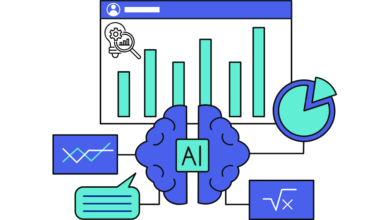
Understanding Generative AI and LLM Risks
Large language models and generative AI have just started getting baked into modern enterprise applications, and with those come an increasing need by security professionals to manage new kinds of security vulnerabilities that no traditional AI-structured rules possess. While such kind of risks are already being addressed by security professionals using different kinds of frameworks, the OWASP Top 10 for LLMs [2] is among those that come to the fore. These highlighted areas comprise the list of critical vulnerabilities in LLMs and give very actionable guidance for defense.
The following is an overview of each of the OWASP Top 10 risks for LLMs:
- LLM01: Prompt Injection is a vulnerability whereby an attacker manipulates input prompts either for unexpected outputs or leakage of sensitive information. Prompt injection requires strict input validation and sanitization practices.
- LLM02: Insecure Output Handling: Many a time, LLM could emit unsafe code or sensitive information within the generated outputs for lack of validation. Professionals in this domain should implement verification whether such generated content does not open up any vulnerabilities.
- LLM03: Training Data Poisoning– While data training is the mainstay of performance in LLMs, it also has the potential to distort model behaviors or produce harmful outputs if any poisoned data is present. Protection of integrity in these training datasets therefore calls for frequent audits and monitoring of such data.
- LLM04: Model Denial of Service (DoS) – Attackers could leverage different types of interactions with LLMs that are load-intensive to the system and result in system downtime or degraded performance. This risk can be diminished through rate limiting and anomaly detection.
- LLM05: Supply Chain Vulnerabilities – Most of the LLMs are dependent on third-party components; hence, they might be very vulnerable to supply chain attacks. It is very important to be regularly auditing and verifying the dependencies with a view to minimizing such risks.
- LLM06 Sensitive Information Disclosure: LLMs will disclose sensitive information if proprietary or private information exists in training data. Recommended strategies for mitigation include data anonymization and strict access controls.
- LLM07 Insecure Plugin Design: Plugins to LLM can extend LLM functionalities, but if poorly handled or designed, it may also introduce security vulnerabilities. Ensuring plugins are secure and isolated from core functionality reduces exposure.
- LLM08: Excessive Agency – LLMs might be given too much autonomy and freedom in executing decisions without having sufficient oversight from humans. The boundaries have to be strictly defined concerning the work of the model as an effective way to avoid not foreseen actions.
- LLM09: Over-reliance-Where very strong confidence in the data output by LLMs is seen, flawed decisions might result. The user training regarding critical evaluation of AI-generated output is an important human control to perform in trying to avoid reliance upon data that may be wrong.
- LLM10: Model Theft—Exfiltration of LLM model information and its intellectual property themselves can be a result of unauthorized access. Protection against such exfiltration and unauthorized access shall include credential protection, monitoring usage, and implementing encryption.
Parth Shah



